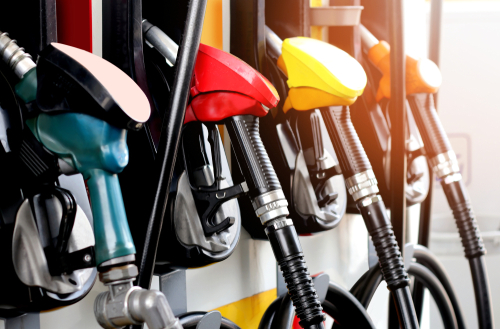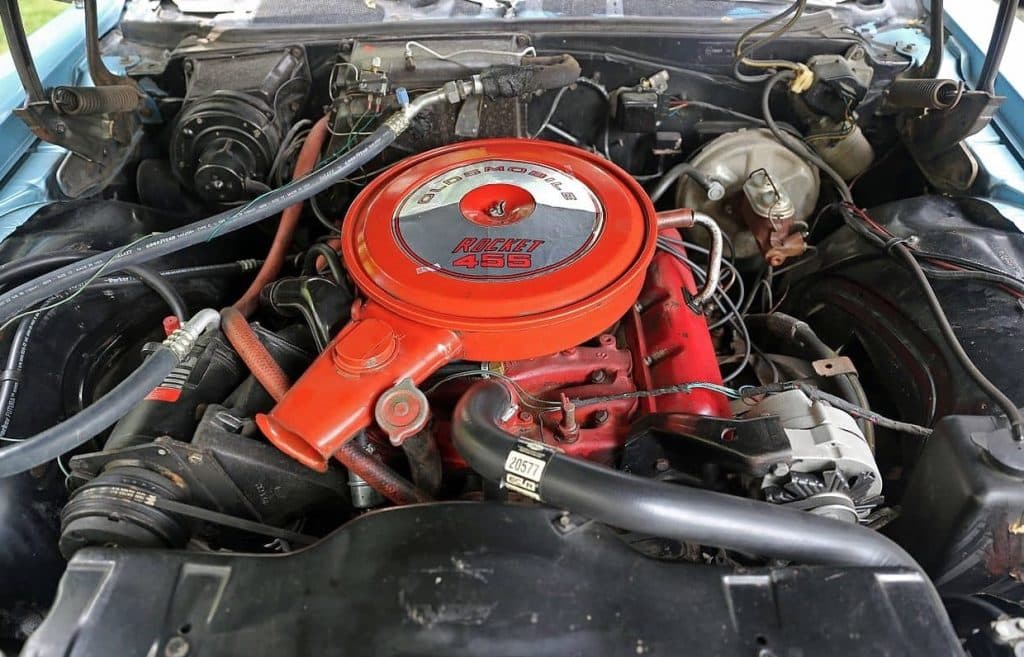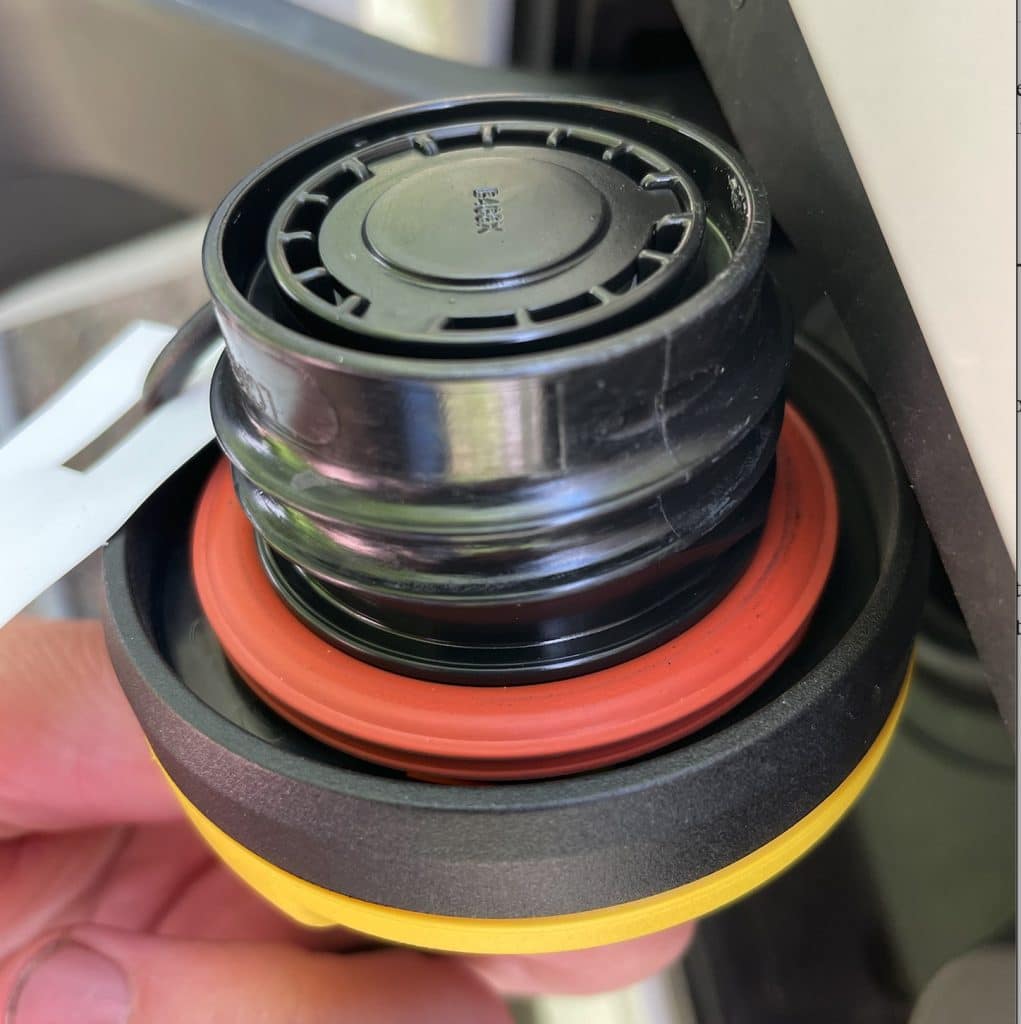Mixing fuels at the pump might sound like a recipe for disaster, but it’s not always a bad idea.
You can mix E85 with regular gas in flex-fuel vehicles, but it’s crucial to understand the implications before you start playing mixologist at the gas station.

Ever wondered why your car might feel a bit peppier after a fill-up with E85? It’s because this corn-based fuel has a higher octane rating than regular gasoline.
Blending E85 with regular gas can boost your octane without breaking the bank. But before you get too excited, remember that not all cars can handle this cocktail.
If you’re driving a flex-fuel vehicle, you’re in luck. These automotive chameleons can adapt to different ethanol blends, allowing you to mix E85 and unleaded gasoline without worrying about engine damage.
Just keep in mind that your fuel economy might take a hit, as E85 doesn’t pack the same energy punch as regular gas.
Key Takeaways
- Mixing E85 with regular gas is safe for flex-fuel vehicles but can damage non-compatible engines.
- Blending these fuels can increase octane rating but may reduce fuel economy.
- Always check your vehicle’s compatibility before experimenting with fuel mixtures.
Understanding E85 and Regular Gasoline
E85 and regular gasoline are like two different flavors of ice cream – they’re both fuel, but with their own unique ingredients and performance characteristics. Let’s pop the hood and take a closer look at these two fuel types.
What is E85?
E85 is the automotive world’s attempt at a cleaner cocktail. It’s a blend of 85% ethanol and 15% gasoline. Think of it as your car’s eco-friendly happy hour drink.
Ethanol, the star of this show, is derived from corn or other plant materials. It’s like giving your car a taste of the farm – minus the manure smell, thankfully.
E85 has a higher octane rating of 100 to 105, which means it can handle more compression before igniting. This can lead to more power in engines designed for it.
But there’s a catch – E85 is thirstier than your average fuel. You’ll find yourself at the pump more often, as it burns 20-30% faster than regular gas.
Basics of Regular Gasoline

Regular gasoline is the old reliable of the fuel world. It’s like that trusty pair of jeans you’ve had for years – not flashy, but gets the job done.
Most regular gas in the U.S. is actually E10, meaning it contains up to 10% ethanol. It’s like a light beer version of E85.
The octane rating for regular gas typically hovers around 87. It’s the fuel equivalent of a solid B student – good enough for most, but not winning any academic decathlons.
Regular gas is refined from crude oil, making it a fossil fuel. It’s been powering our cars for over a century, proving that sometimes, the old ways are still relevant.
Comparing Ethanol Content and Octane Ratings
Let’s put these fuels side by side and see how they stack up:
| Fuel Type | Ethanol Content | Octane Rating |
|---|---|---|
| E85 | 85% | 100-105 |
| Regular | 10% (E10) | 87 |
As you can see, E85 is like regular gas that’s been hitting the gym hard. It’s got more ethanol and a higher octane rating.
The higher ethanol content in E85 means it burns cleaner, reducing emissions. It’s like giving Mother Nature a little high-five every time you fill up.
But remember, with great power comes great responsibility. Only flex-fuel vehicles can handle E85’s potent blend. Using it in a regular car would be like trying to feed a cat a steak – it just won’t end well.
The Ins and Outs of Flex-Fuel Vehicles

Buckle up, folks! We’re about to take a wild ride into the world of flex-fuel vehicles. These automotive marvels are like the Swiss Army knives of the car world, ready to guzzle down different fuel concoctions without breaking a sweat.
What Defines a Flex-Fuel Vehicle?
You might be wondering, “What makes a car flex-fuel?” Well, it’s not just a fancy name. Flex-fuel vehicles (FFVs) are designed to run on gasoline or a blend of up to 85% ethanol (E85). The secret sauce? They’ve got special fuel systems and engine components that can handle the corrosive nature of ethanol.
Keep an eye out for a yellow gas cap – it’s like a secret handshake for FFVs. These cars also have sensors that detect the ethanol content in the fuel, adjusting the engine accordingly. It’s like having a mini-scientist under your hood!
Benefits of Flex-Fuel Capabilities
Now, why would you want a car that’s not picky about its drink?
For starters, E85 is often cheaper per gallon than regular gas. It’s like finding a bargain at the pump every time you fill up!
But wait, there’s more! E85 has a higher octane rating, which can give your engine a little extra pep in its step. It’s like giving your car a shot of espresso before hitting the road.
Flex-fuel vehicles are also more environmentally friendly. E85 produces fewer greenhouse gas emissions, so you can feel good about reducing your carbon footprint while cruising down the highway. Plus, some areas offer tax breaks for FFV owners. Who doesn’t love saving money and the planet at the same time?
Mixing E85 with Regular Gas
Thinking about blending E85 and regular gas? You’re not alone. Many drivers wonder if this fuel cocktail is safe and effective. Let’s dive into the nitty-gritty of mixing these two fuels and what it means for your ride.
Can You Blend the Two?
You can safely mix E85 with regular gas, but don’t go wild just yet. Your car’s tolerance for this concoction depends on its specs.
If you’ve got a flex-fuel vehicle, you’re in luck – it’s designed to handle various ethanol blends.
For the rest of us, a little E85 in the tank won’t cause the apocalypse. But remember, too much of a good thing can lead to engine hiccups.
It’s like adding hot sauce to your meal – a dash can spice things up, but overdo it, and you’ll be reaching for the fire extinguisher.
Proportions and Precautions
When it comes to mixing E85 and regular gas, think of yourself as a bartender – proportions matter.
A good starting point is adding 2 gallons of E85 for every 10 gallons of regular gas. This blend can give you a nice octane boost without overwhelming your engine.
But here’s the kicker: your fuel economy might take a hit. E85 burns faster than regular gas, so you’ll be visiting the pump more often.
On the bright side, it’s usually cheaper, so your wallet might not feel the pinch.
Precautions:
- Check your owner’s manual first
- Don’t exceed the recommended ethanol content
- Monitor engine performance closely
Impact on Engine Performance
Mixing E85 with regular gas can be like giving your engine a shot of espresso. The higher octane rating of E85 (100-105) can increase power and reduce knocking.
Your engine might purr a little louder, especially if it’s turbocharged or high-compression.
But there’s a catch. Your engine has to burn 20-30% more fuel to match regular gas performance. It’s like your car suddenly developed a drinking problem – more fuel, less mileage.
On the upside, this blend can be easier on your engine in cold weather. It reduces vaporization, making those chilly morning starts a breeze. Just don’t expect miracles – your car won’t suddenly turn into a monster truck.
Economic and Environmental Impacts
Mixing E85 with regular gas can impact your wallet and the planet. Let’s dive into the dollars and cents, as well as the green benefits of this fuel cocktail.
Fuel Economy and Costs Analysis
You might think you’re saving big bucks by pumping E85, but hold your horses!
E85 can reduce your fuel economy by 20-30% compared to regular gas. That means more trips to the pump, folks.
But don’t cry into your gas tank just yet. E85 often costs less per gallon, thanks to government subsidies promoting biofuels.
Your savings dance will depend on the price difference between E85 and regular gas in your area.
Here’s a quick comparison to tickle your calculator:
- Regular gas: 30 mpg, $3.00/gallon
- E85: 23 mpg, $2.50/gallon
Do the math, and you’ll see it’s a close race. Your mileage may vary, literally!
Emissions and Renewable Fuel Advantages
When you mix E85 with regular gas, you’re giving the environment a little high-five.
E85 is more eco-friendly than its petroleum-based cousin.
Ethanol, the star of E85, is a renewable resource made from corn and other plant materials. It’s like growing your own fuel! This reduces dependence on fossil fuels and can lower greenhouse gas emissions.
But wait, there’s more! Ethanol production supports American farmers and reduces oil imports. It’s like apple pie for your gas tank, with a side of energy independence.
Remember, though, that ethanol production isn’t perfect. It requires energy and water, so it’s not a magic bullet. But in the grand scheme of things, it’s a step in the greener direction.
Practical Tips for Drivers
Maintenance and Longevity of Your Vehicle
Keep an eye on your fuel system, folks! Mixing E85 and regular gas can be a bit of a wild ride for your engine.
You’ll want to check those fuel lines and filters more often than you check your hair in the rearview mirror.
Remember, ethanol is like that overzealous cleaner at a party – it’ll strip away those gasoline deposits faster than you can say “octane rating.”
This means your fuel system might need some extra TLC.
Don’t be surprised if you see a slight dip in fuel efficiency. E85 might be cheaper at the pump, but it’s a bit of a gas guzzler.
You’ll be visiting your friendly neighborhood gas station more often than usual.
Finding the Right Fuel Type for Your Car
Before you start playing mixologist with your fuel, check if your car can handle it. Not all vehicles are created equal when it comes to E85 tolerance.
Flex-fuel vehicles are the party animals that can handle any mix.
If you’re looking for a power boost, E85 might be your new best friend. It’s got a higher octane rating than regular gas, which can translate to more horsepower.
Your car might just thank you with a bit more pep in its step.
But here’s the kicker – finding E85 can be trickier than finding a parking spot downtown.
Make sure you know where the E85 pumps are in your area before you commit to this alternative fuel lifestyle.
Frequently Asked Questions
Mixing E85 and regular gas can be tricky business. Let’s dive into some common questions about blending these fuels and what it means for your ride.
What’s the real deal with tossing E85 into a tank that usually takes regular – any hiccups to expect?
You might be in for a bumpy ride if you’re not careful. Mixing E85 with regular gas can work, but your car needs to be up for the challenge.
If it’s not designed for flex fuel, you could be looking at some engine troubles down the road.
I’ve got a flex fuel vehicle; am I good to play mixologist with E85 and regular or is that a recipe for disaster?
You’re in luck, fuel alchemist! Flex-fuel vehicles are designed to handle E85 and regular gas, so mix away.
Your car’s computer will adjust to whatever concoction you brew up at the pump.
Just because my car’s got a flex fuel badge, does that mean I can play it fast and loose with fuel types?
That flex fuel badge isn’t just for show, my friend. It’s your golden ticket to fuel freedom.
You can switch between E85 and regular gas without breaking a sweat. Your car’s smart enough to handle the changes.
What’s the skinny on switching from good ol’ dinosaur juice to this newfangled E85 without causing a commotion under the hood?
If you’re not driving a flex-fuel vehicle, you’ll want to tread lightly. Gradually introducing E85 to your tank can help, but don’t go overboard.
Start with a small mix and see how your car reacts.
If my ride is labeled ‘flex fuel’, does it have a secret handshake with both E85 and regular gas?
You bet it does! That flex fuel label means your car’s engine is like a multilingual genius.
It speaks fluent E85 and regular gas, switching between them smoother than a polyglot at an international conference.
So, you’re telling me some cars can switch between E85 and regular gas – is this sorcery or just good engineering?
It’s not magic, just some clever engineering.
Flex-fuel vehicles have special sensors and components that can detect the ethanol content in your fuel.
They adjust the engine’s operation on the fly, keeping everything running smoothly no matter what you put in the tank.
